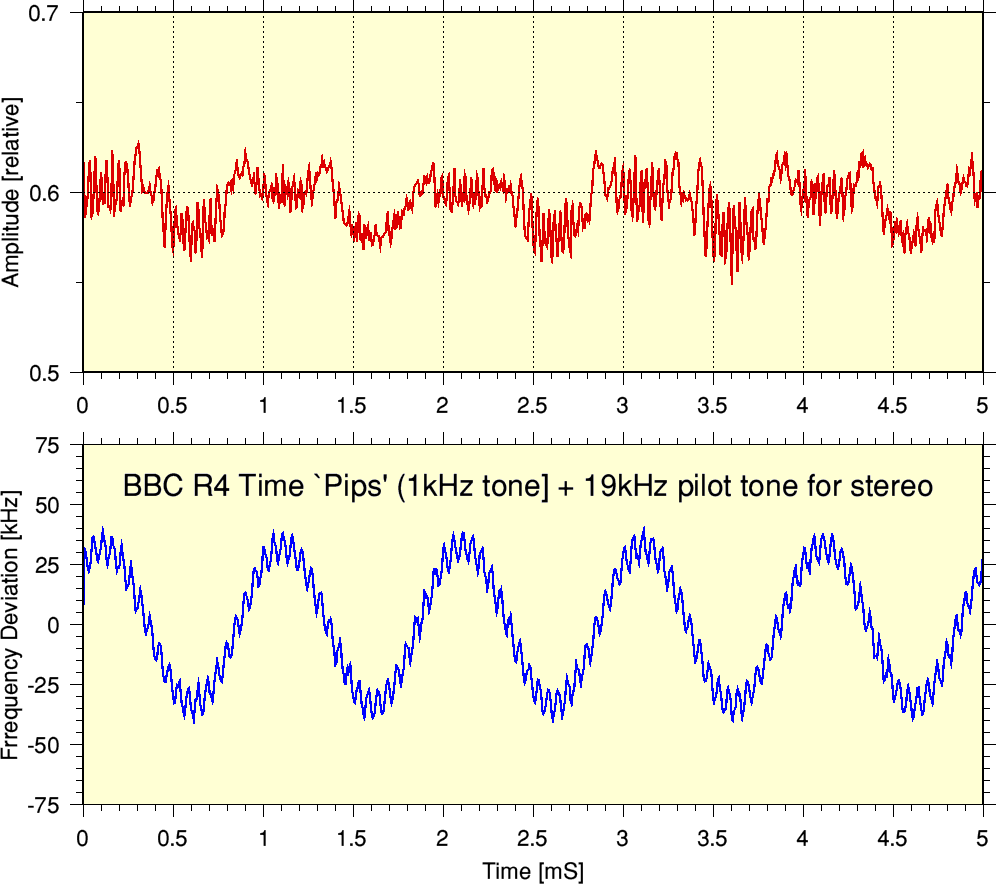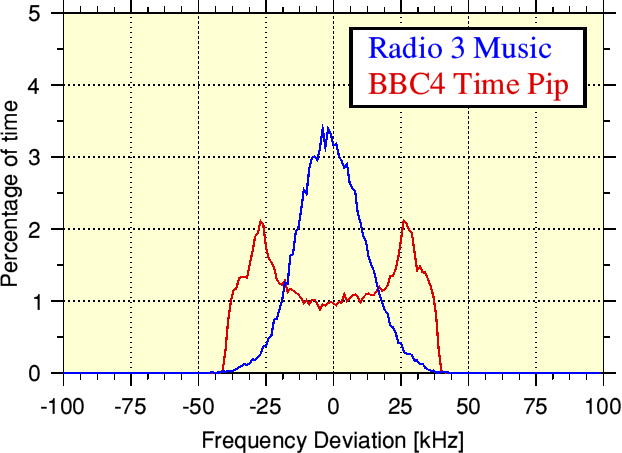
Just a few decades ago a good FM tuner used to listen to BBC Radio 3 was regarded as one of the best ways to hear ‘classical’ music in superb sound quality. Although daytime – and particularly “drive time” programs tended to have more level compression applied, evening concerts were often offered superb sound – if you had a suitable antenna, FM tuner, and hi-fi setup.
These days access via other methods – based on internet downloads and streaming – tend to have replaced that. And it now the case that BBC R3 tends to offer best quality via its 320k AAC streams. The old ‘supertuners’ like the Yamaha CT-7000 now tend to be a minority interest for almost ‘historic’ reasons as ‘classic Hi-Fi’. Emblematic of a past era when some makers developed some superb components and circuitry to get the highest possible quality of sound.
So much, so understandable. One result is that now if you want an FM tuner rather than a portable radio you tend to find that available tuners are quite different in various ways. Most now offer DAB and DAB+ reception along with VHF/FM, and may also offer web streaming, etc. However, despite being versatile, they tend to have a poor reputation when it comes to sound quality. To some extend this is, alas, inevitable, because the low bit-rate ‘lossy’ encoding of DAB and DAB+ broadcasts does sound quality no favours. But it is a puzzle when it comes to using digital technology to receive ‘analogue’ FM stereo for two reasons.
Firstly, the fact that audio enthusiasts now tend to regard the BBC 320k AAC streams or downloads as sounding better than the same source material via VHF/FM indicates that it is accepted that these ‘digital’ methods can deliver better sound quality these days than ye olde FM. Regardless of the often-held preference in other source types for analogue methods – e.g. to prefer LPs to digital media!
So far as I’ve been able to tell, there is no inherent reason why a well-designed and made ‘digital’ tuner receiving FM/VHF must, inevitably, sound worse than an analogue one. Indeed, there are some reasons to say that a well designed and made digital tuner could, for many listeners, give better sound quality than any of the old (analogue) supertuners!
OK, again to some extent a poor reputation may stem from the actual broadcasts not being as good as in the past. But to an engineer the ‘blame the tuner because it is digital’ aspect is rather strange – because a digital receiver can deploy methods to maximise sound quality which would be virtually impossible for even a CT-7000 to match! For example, one of the real-world factors that can all-to-often degrade sound quality from VHF/FM is ‘multipath’ reception. An analogue tuner like the CT-7000 can detect this and give the user an indication it affecting reception. But it can’t correct for the way multipath reception then tends to distort the sound.
In contrast, a well designed digital tuner should be able to apply some correction to reduce the impact of this problem on sound quality. In effect, to fix the problem. And the engineering costs could also mean being able to do this at a lower price.
To investigate this I decided to do two approaches. One was to get a typical modest-priced ‘digital’ DAB/DAB+/VHF tuner to use alongside an old analogue tuner. The other was to use the same USB radio ‘dongle’ that I employed a while ago for a ‘Debunking Antennas’ investigation...
The "FunCubeProPlus" USB Radio device captures the signal it is tuned to as a 192k sample rate series of ‘IQ’ format cycles. These can be used to calculate the radio signal’s frequency and amplitude values at this rate. For those who want to understand the gory details of the mathematics I’ve written a simple PDF which uses some diagrams to explain how that can be done. It can be found by clicking here. But the result is then a stream of information about the amplitude and frequency of the radio signal vary with time.
The BBC broadcast what have come to be called “The Pips” as a time reference for listeners. The most usual time for them to be broadcast is at 1 O’Clock on Radio 4. This signal is a convenient one from the POV of checking any technical analysis as the main part of this waveform is a plain sinewave burst of specified frequency and amplitude. So it can serve as a convenient reference for measurements.

The above shows the results from recording the pips and processing the results into the AM and FM output. The blue line shows the output we could expect from an idealised FM tuner. Note that the pips are ‘mono’ in that both the Left and Right channel outputs from using a stereo tuned should be identical. No ‘difference channel’ info is broadcast during the pips. However the above shows that a 19kHz 'pilot' tone is broadcast. i.e. the transmission continues to tell the receiver to leave its stereo decoder in operation.
This also serves as a reminder that in a complete tuner this output would then go though a series of other processes. These would use the pilot tone to convert the decoded FM patterns into stereo audio which - in each output channel- is limited to an audio frequency range up to 15kHz. Hence you should not hear any 19kHz tone, or other audio above 15kHz.
The red line in the above plots shows the measured Amplitude (AM) variations in the received signal versus time. Ideally, this should be a flat horizontal line to represent the lack of any AM at all! Yet we can see that – in practice – there are amplitude variations, and to some extent these do seem to be related to the FM patterns. This unwanted AM is likely to be a result of Multipath , a problem which can degrade sound quality!
(N.B. If you aren’t familiar with this, see: https://www.audiomisc.co.uk/VHF-Tuners/VHF-Tuners.html where I explain how this can occur.)
In general, most traditional FM tuner designs ignore Multipath and simply rely on the user (or their antenna installer!) to check for this and try to minimise it’s impact. But some of the old ‘super tuners’ included ways for the unwanted AM caused by multipath to do something like waggle a meter on the front of the tuner to alert the user. It then becomes a question of deciding to alter the receiving antenna location, alignment, etc, to minimise this unwanted effect if you want the best possible results.
However given high-speed modern digital processing the use of a digital IQ method to gather both the FM and AM as a streams of sample values prompts the question: Could the digital processing in the tuner then use the AM pattern to ‘correct’ the FM and reduce or remove any distortion that otherwise adds to the FM output? If so, a digital tuner could give many users a higher fidelity sound quality.

The above graph shows the result of plotting the related AM and FM sample values against each other. It can be seen that as the 1kHz tone varies back and forth between its maximum deviations of (approx) +/- 40kHz there does seem to be some systematic variations in the signal amplitude. Hence at least in principle, some form of Multipath distortion detection and reduction looks possible. (N.B. if you look carefully at the above plot you can also see that it indicates that the digital receiver was also tuned about 1kHz ‘high’ for the BBC transmission. Which shows that suitable processing in the tuner could detect and adjust this to get highly accurate tuning.)

The above shows a section of the FM demodulated output. This example is of some complex music from R3. Note that it includes the encoded stereo information which uses a 38kHz subcarrier to put the L-R ‘difference’ audio in the ultrasonic band.

The above shows histograms of how often various Frequency Deviation values occur during short sections of two different broadcasts. One (shown in blue) represents the statistics for some music on BBC R3 FM. The other (shown in red) shows the equivalent results for a ‘time pip’ on BBC R4 FM. In each case the histogram counting ‘bins’ are 1 kHz wide and the plotted results are for a 200 msec period. In both cases the results show a general tendency for the BBC to keep to deviations over a range of about +/- 50 kHz or less, giving them about 3dB added ‘head room’ for unanticipated occasional peaks. In general music and speech tends to have a statistical distribution similar to the blue plot, with the a width that varied with volume. However a simple sinewave (as used for the pips) tend to have a more ‘crown like’ pattern. In musical terms, that sort of ‘crown’ shape might arise from a single note played on an instrument which generated a simple periodic waveform.
The general conclusion we can draw from the above tests and examination is that it should be perfectly possible for a ‘digital’ FM/VHF tuner to provide sound quality which is at least an equal of the best designs of conventional ‘analogue’ tuners. Indeed, given the sheer power/cost of modern digital electronics it seems quite likely that such a tuner could be cheaper and easier to build – an not experience problems due to components like analogue tuned filters gradually degrading out-of-spec over the years! In addition, it seems quite plausible that ‘amateur’ designs could be made by combining a suitable USB Radio ‘dongle’ with software processing. And that the software could – via correlating AM with FM – reduce the effect of multipath!
In short, such a tuner could be better than analogue designs, as well as cheaper and easier to make. Which for me brings up again the curious question: Why has no-one done this already? Is it just because everyone assumes “FM is dead” as a source of good sound quality? The sound quality (sic!) of many commercial stations would support this feeling. But the sound from a station like BBC R3 via FM for items like their evening concerts still seems to me at least to be pretty good, and enjoyable. Despite my also enjoying the BBC’s 320k AAC streams. Indeed, quite often I find I prefer the FM! So at some future point I’ll investigate what might be possible in terms of multipath detection and mitigation... so stay tuned!
1700 Words
Jim Lesurf
24th Oct 2024